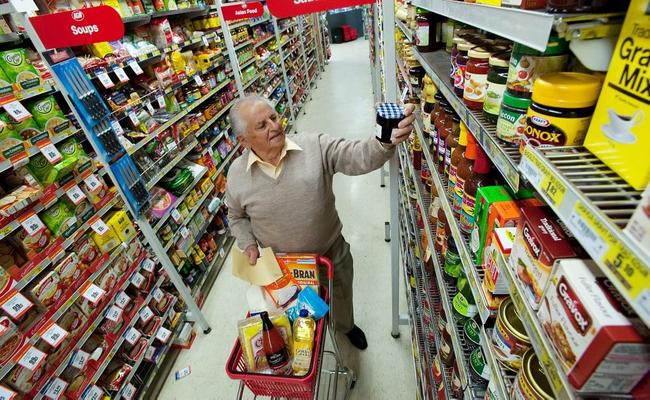Counting the cost of life
FORTY years ago, Bill Palmer was in the fruit business, raising a family with his wife Ruth and coping with the demands of small business.

Coffs Harbour
Don't miss out on the headlines from Coffs Harbour. Followed categories will be added to My News.
FORTY years ago, Bill Palmer was in the fruit business, raising a family with his wife Ruth and coping with the demands of small business.
They worked hard up to seven days a week. They had bought their first home for three thousand pounds in 1956.
Most people old enough would say these were happier days when everyone lived to their means.
Given all the talk, are household budgets today really stretched further than ever before?
The Advocate engaged two of Australia’s leading economists to investigate.
One thing is certain, the value of money has had a dramatic shift. What on average cost $100 in 2011, cost just $11.18 in 1971.
Compared to 1971, let alone 1961 and 1951, Councillor Palmer said life today was more comfortable for people with good jobs, with money left over at the end of the week after essentials were paid for, but in turn people expect more – more entertainment, eating out, more facilities and more possessions, whereas back in the day there was no money for anything but the basics.
“I wouldn’t want to go back, but we had a lot of fun,” he said. “When we bought our (first) house there was a credit squeeze and we shopped around until we found a bank that had money for lending – it was the old CBC Bank which was opening a branch in town and looking for business.”
Today it is that same scenario of young people trying to buy their own homes that worries Cr Palmer as he looks into the future for his great-grandchildren.
“People’s expectations are a lot higher now,” he said. “Perhaps their expectations are a little too high. People with those ‘buy-now-and-start-paying-off-in two-years deals – if things don’t work out they will find themselves in trouble.
“When we moved into our first home we had no carpets, just bare floorboards, which we polished ourselves – we didn’t even have a fridge.”
In 1991, home loan interest rates were 17.5%, proving a huge financial hurdle, not just for home owners but for small business people like the Palmers, struggling to pay wages at their fruit shop and pay the interest on their bank overdraft.
Southern Cross University economist Dr Chris McDowell says with some notable exceptions, things are getting cheaper.
“The cost of housing in the past decade, but not counting the past two or three years, has risen way more than people’s incomes, as has the cost of land,” he said. “Another exception is energy costs, which are relatively more expensive today than they used to be. Petrol, too, is much less affordable today.”
Dr McDowell said there was a perception the cost of living was beating us with the increased costs of items such as housing, electricity prices, childcare, private education and healthcare.
“That gives us a perception things are really expensive because we see prices going up all the time,” he said.
“There’s a perception the cost of living is going up, and it is, but while what I say would hold true for most people with a reasonable job, the tough thing is for people with low incomes; they cannot avoid housing costs and, for example, energy and healthcare costs.
“Thus, they have little spare income to enjoy all of the cheaper consumer goods that many of us are able to afford.
“A lot of food, clothing, fridges and motor cars are relatively cheaper to buy today relative to our incomes. You just have to look around and see how many more of these possessions people have.”
He said relative to 40 years ago, there are far more two-income households than there used to be.
“For example, a motor car today would cost a smaller proportion of anyone’s salary than 20 and 40 years ago and it would be true to say any whitegood or household appliance would cost a substantially smaller proportion of anyone’s weekly income than it did 20 or 40 years ago.”
Dr McDowell said although we perceive that the cost of living goes up because we see prices go up, we are relatively better off compared to 20 and 40 years ago – many of us have so many more possessions and there are far more two-income households than there used to be.
Leading economist with the University of NSW, Dr Nigel Stapledon, says that in the past 40 years there has been a decline in the percentage we’ve spent on food, clothing, cigarettes, alcohol and the purchase and operation of cars, but there’s been a rise in spending on health.
“In real (2011 dollars) terms, the cost of cars and communications has declined significantly,” he said.
“The rise in the share of income devoted to communications reflects the big increase in usage of, for example, mobile phones and the internet.”
Originally published as Counting the cost of life


